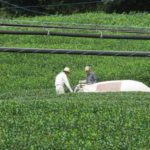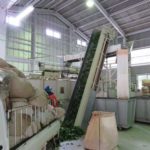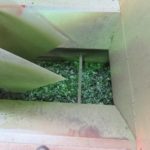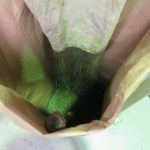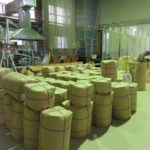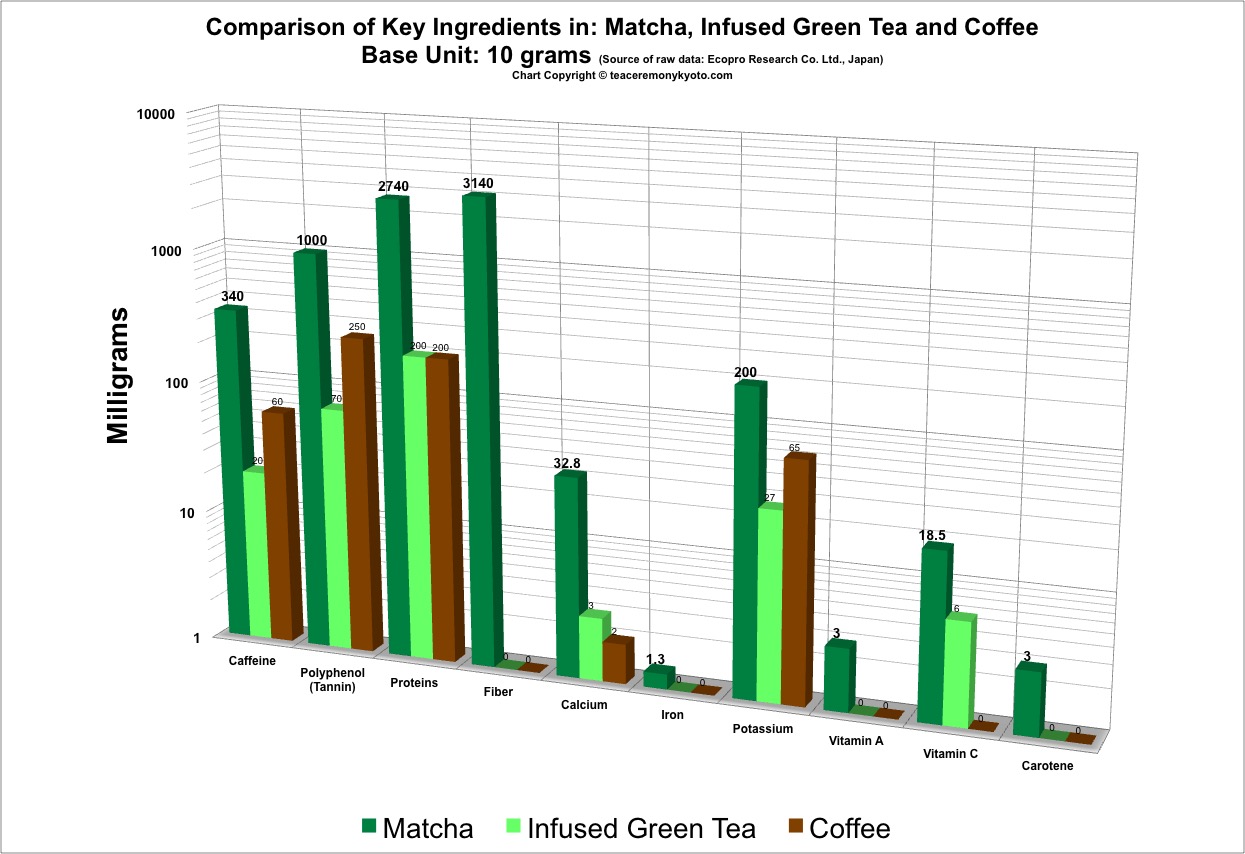ZEN & MATCHA & PAX
ANOTHER WAY TO FIND PEACE OF MIND WITH THE JAPANESE TEA CEREMONY
There are different ways to attain Peace. Zen is just one of several ways for attaining peace. But what is Peace? One favoured definition compares peace to the absence of stress in one's daily life that results in a feeling of inner calm and a deeper sense of inner balance: this is Zen.
Because Matcha is at the heart of the Chanoyu and, it was largely shaped by Zen monks, it focuses on perfection of mind and body and for this reason it can be used to practice meditation and relaxation. The result is truly Zen and Peace and Matcha.
Our bodies need relaxation to reduce the daily stress of modern life thereby boosting our energy and mood and making our life more full and complete. This is, indeed, what is hidden in the term “chanoyu” and "chado" i.e. "tea ceremony" and “the way of tea,” respectively. Zen monks have been practising it for at least 500 years and the Samurai themselves used to practice chanoyu.
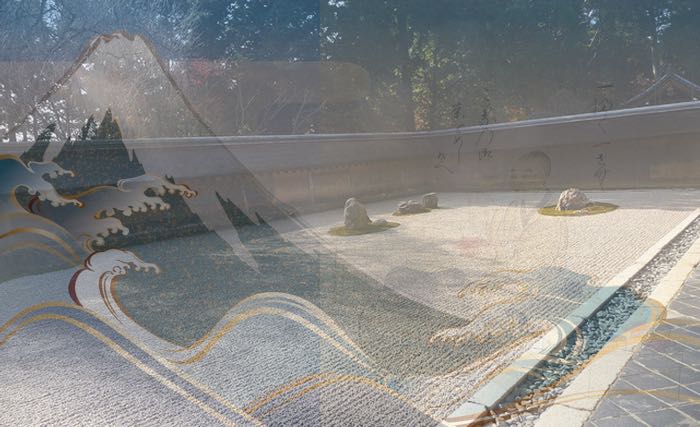
HOW IS MATCHA GROWN AND PRODUCED
Key Phases of Tencha Production
- PLANT GROWING
- HARVESTING
- STEAMING
- COOLING - DRYING - SEPARATION
- CLIMATIC STORAGE
- GRINDING
Plant Growing
The production of Matcha is made by carefully growning tea leaves called Tencha that are later ground into a fine powder with an average size of less than 10 micrometers. By way of comparison ordinary wheat flour is ground to an average size of 50 micrometers. Matcha powder is therefore much finer than wheat flour.
Tencha leaves are not used to brew tea but are used exclusively for producing Matcha. To make infused green teas you use Gyokuro or Sencha leaves, the top quality green teas, or Bancha for other lower choices of tea.
The reason Tencha leaves are not used for brewing green tea is because the traditional teachings of the Japanese Tea Ceremony forbid it. This ban, however, is not rooted in religious beliefs but to ensure a unique supply for the ceremonial grade of matcha together with ensuring that Matcha tea is always at its best fragrance at the time of consumption. Matcha powder can oxidise relatively easily because of its minute size. For this reason it has to be produced a few weeks ahead of consumption.
Tea plants reserved for Tencha plantations are harvested during the first Spring harvest (May) and after the most careful processing they are stored in climatic rooms to maintain their optimum conditions of freshness. Matcha is then produced in batches of Tencha leaves released from the climatically controlled store rooms according to demand and only then proceed to be ground into fresh Matcha powder.
Top quality Matcha is only made from the first Spring harvest. The following harvests produce lower quality matcha used for culinary purposes and by the food industry.
Matcha production is the most complex way of producing tea and only Japan’s elite tea farmers are capable of producing high quality matcha. By way of an example, early in April the Tencha tea plantations are covered with reed screens to avoid direct sunlight for about 3 to 4 weeks. In this way their amino acid content increases and produces more chlorophyll which intensifies their color and increases their fragrance. By so doing the tea leaves will produce less astringency and the taste is also much improved.
Because Tencha leaves are grown in different tea farms each of which is exposed to a different local climatic conditions such as, ground height of the farm, soil type, exposure to the sun, moisture content in the air, and other factors, tea farmers go to a lot of expenses to control the climatic conditions over the tea plantations. For this reason a computerised system of electric fans are installed on pylons all over the plantation (please see background picture on this page) in order to move the air and temperature surrounding the growing tea plants.
But that is not all.
Before grinding Tencha leaves into Matcha, a selection of different Tencha leaves is made by the Chashi (= to enologist in wine production) to ensure consistent quality of taste of the finished Matcha product. Like in many other aspects of Japanese society, the demands of the samurai quest for perfection ensure the highest achievable quality of blended Tencha leaves, hence of Matcha, as well as for those which are used for the production of top infused green teas such as Gyokuro and Sencha.
When you drink Matcha do give a thought to the very scrupulous attention given to the growth of the Techa leaves to produce Matcha. In Ju-An we only use top quality Matcha sourced from a 350 years old producer in Uji, Kyoto.
Harvesting
When young tea leaves of the Camellia sinensis plant begin to bud in early April some of the tea plants set aside for matcha are shaded from direct sunlight. Picking takes place on the 88th day of the Japanese Spring season which falls around the first week of May. This harvest is called the "first flush" because the young shaded leaves produce the absolute finest quality matcha in terms of freshness and fragrant taste. Only the top three leaves of the stem are picked for Tencha. To avoid fermentation once the leaves are cut from the plant they are taken to the processing plant in small batches in order to avoid fermentation affecting the quality of the end product.
Steaming
On arrival to the production plant, located close to the tea plantations, the sacks or baskets containing the tea leaves are dropped into a receptacle and an Archimedean screw elevator starts the first stage of the production process to start the steaming process that lasts for about 20 seconds. Fermentation of the tea leaves is thus stopped and this ensures that the natural green color of the leaves is maintained as well as its nutritional content and fragrance.
Cooling, Drying & Separation
After steaming the tea leaves go through a process of air cooling and drying in a multi-stage air chambers. Subsequently, the leaves go through a drum machine which removes the stem and veins on each leaf. The remaining leaf free of stems and veins is now cut into smaller size and it is called Tencha.
Climatic Storage
Tencha leaves are stored under climatic conditions and released in batches to produce fresh Matcha in the final stage of production.
Matcha
Tencha leaves are sent to a matcha processing plant where a large number of grinding machine are installed to convert tencha leaves into a fine powder. To process 20 grams of matcha requires about one hour of grinding under a dark environment to ensure that ultraviolet light does not affect the color and fragrance of the matcha through oxidisation.
Health Benefits of Matcha
ABOUT MATCHA'S MEDICAL BENEFITS
Much has been written about the benefits of matcha. The use of simplistic statistics showing the level of antioxidants in matcha compared to other fruits and vegetables, has generated inappropriate understanding and perhaps led to exaggerated claims as well as a whole new wave of commercial activities around matcha.
Is it all true? The basic facts are true because they are scientifically measured. The way they are presented, however, can often be very misleading. Statistics as a branch of mathematics must be read with the correct understanding and limitations.
For example: the now well known bar chart showing the level of antioxidant measured in a USA lab for 100 grams of matcha, compared to other fruits and vegetables of the same weight, is true. What the reader must not be lead to believe is that drinking a bowl of matcha is equivalent to our body ingesting those large amounts of antioxidants. In a bowl of matcha we consume about 2 grams of matcha powder therefore the value used must be reduced by a factor of 50, assuming a linear simplification. Therefore from 1573 we drop down to 31. The meaning of this almost infamous bar chart is that the level of antioxidants ingested in a bowl of matcha made with 2 grams of matcha tea, against the level of 100 grams of spinach or broccoli or blueberries that we ingest is similar.
Obviously, for the same benefits matcha can be said to be a slimmer food because we only need to eat 2 grams of tea leaves powder against 100 grams of other foodstuff. But this conclusion, taken out of context, can lead quickly to absurd claims about matcha being a potent food for slimming. What we can say is that matcha is a very nutritious drink to take, and it is reasonable to say that it is a potent healthy drink, to use some marketing jargon.
Another aspect of the benefits of matcha is to look at the level of caffeine, vitamins and proteins in matcha compared to coffee and infused leaf teas. The bar chart shown below or opposite, depending on whether you are reading this article on mobile devices or desktops, brings these other properties into focus. You can click on the chart to view a larger one.
The chart focus on the key organic substances of: caffeine, tannin, proteins, vitamins, some minerals and fiber. Let's start with fiber, but let me bring to your attention the fact that I had to plot the vertical axis of the chart using a logarithmic scale else the green bars of matcha would be popping out of the screen you are viewing from. They do say matcha is a potent food after all!
Fiber is an easy one to understand because when you drink matcha you are ingesting a few whole leaves of tea. With infused green tea or coffee you are not ingesting any fibers. In 2 grams of matcha, therefore, you are ingesting 0.6 grams of fibres against zero grams for green teas or coffee. Remember that the data refers to 10 grams whereas when you drink a bowl of matcha you consume 2 grams, whereas to make tea or coffee you can easily use 10 grams depending on the type of coffee or tea leaves.
Tannins present in teas, according to many scientific reports, indicate a negative association between tea consumption and incidences of cancers. Tea polyphenols and many tannin components are suggested to be anti carcinogenic due to their anti oxidative properties. A 2 gr bowl of matcha therefore guarantees roughly there same amount than in a cup of Italian espresso and much more than infused green tea.
Matcha is also a good source of proteins, about 10 times more than in infused green teas or coffee. Even 2 grams of matcha will contain some 500 mgr of proteins against 100 mgr for a 5 grams green tea infusion or 10 grams of coffee.
Matcha is also a good source of calcium; the same cannot be said for green teas and coffee because they both contain but a trace.
Potassium is another benefit of Matcha: 40 mgr in a bowl of matcha against 14 mgr in infused green tea but less than that present in a strong cup of coffee.
Vitamin A is also present in matcha but is much less present in infused green teas and none at all in coffee. The same applies to Vitamin C for which matcha is a strong source against green teas and coffee.
I left caffeine for last because it is believed that although matcha contains more caffeine than coffee itself the way it acts on the body is quite different. Reports indicate that Matcha green tea because it is prepared as a powder whisked in hot water the absorption of caffeine by our body occurs over a period of 6 to 8 hours. Unlike the effect of coffee, it is easier therefore on the body and its effect is more mildly distributed over a much longer period of time thus boosting the body metabolism by as much as 40%. One effect of this more gradual absorption is that blood sugar levels are better regulated.
Japanese Midwife Old Tales about Matcha
In the 13th century, Shogun Sanetomo was suffering from heavy headache due to a hangover. Eisai, the Zen monk, recommended him to drink matcha, and he recovered quickly.
If you suspect to have caught the flu, use green tea to gargle when you get home.
If your eyes are tired because of overwork on computers etc., soak a sterile cotton cloth in green tea and put it over your eyes.
Wash your face with green tea and your ageing spots on your face will disappear.
Because tea has a sterilising effect, mothers use cotton wipes soaked in green tea to wipe babies' buttocks.
If you suffer with stuffed nose, wash your nose with Bancha and salt.

WARNING ABOUT TAKING CONCENTRATED GREEN TEA SUPPLEMENTS
Recent reports have established that some people who have taken a course of concentrated green tea extracts, such as offered in the market and available from multiple sources in health shops, have suffered from liver decease and kidney degradation.
Such Green Tea Extracts are offered as over the counter health herbal supplement in doses ranging from 100 milligrams to 750 milligrams per pill or tablet.
Evidence suggests that some people have suffered liver decease as a result of embarking on such highly concentrated supplements on the basis of boosting their metabolism. A popular and typical recipe includes high concentrations of polyphenols, catechins and epigallocatechin-3P-gallate (EGCG). The concentrations reported on the labels of these products are not natural and are extreme.
A recent article was reported in the BBC/News website under the title: "The food supplement that ruined my liver" published on 25 October 2018. Here is the link to that article:
https://www.bbc.co.uk/news/stories-45971416
We are posting this information to make the public aware of these dangers and at the same time to understand that taking matcha drinks a few times a day is perfectly healthy and beneficial as millions of people have been doing so for centuries in Japan.
But to take pills with high concentrations of polyphenols and catechins and especially EGCG may well have adverse effects on your health. Stay natural and avoid over-engineered supplements unless there is ample scientific evidence that they have no adverse effect on your health.
